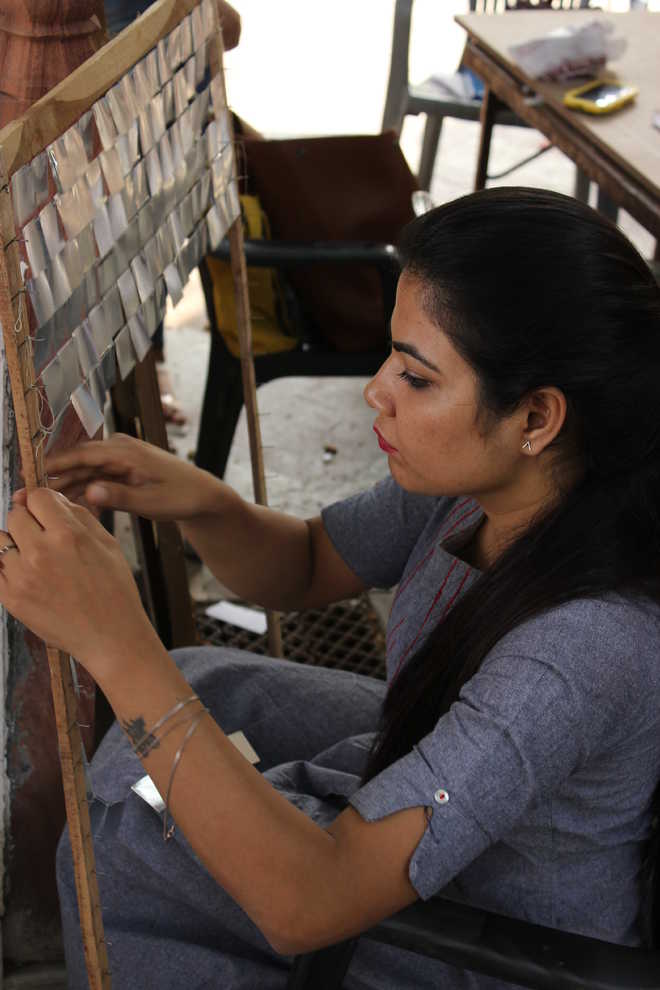Arushi Chaudhary
Nature, they say, is the finest artist. While for centuries creative geniuses have turned to this opulent expanse for inspiration, a new genre of art is taking this dynamics of credence a step further. Nature artists don’t just turn to the macrocosm surrounding us for inspiration but also develop their creation solely from its elements. Gunjan Tyagi, a 33-year-old artist based in Delhi, is one of the few practising this unique art form in India.
An alumna of Sir JJ School of Arts in Mumbai, Gunjan started her creative journey with mainstream painting but eventually found her calling as a nature artist and now dabbles in installations and site-specific creations. “My journey as an artist followed a typical path in the initial years. After finishing my Masters in painting, I worked as a research assistant with an art gallery in Mumbai, and then, moved to Delhi and started out as a freelance artist. At the time, I was primarily doing paintings. In 2014, I landed an artist residency program in South Korea and that’s where I was introduced to the concept of nature art. The idea of the artist as a nomad in nature resonated deeply with me.”
During this residency, Gunjan had the chance to connect with some prolific nature artists, which led to collaboration with YATOO, a Korea-based art organisation, and paved way for her association with Global Nomadic Art Project (GNAP).
In 2014, GNAP approached her for being one of the organisers for their initiative in India in 2015. “A total of 20 international and 10 Indian artists traversed through the landscape of Gujarat to set up our art installations in pre-designated places in all-natural settings. This was a truly a turning point for the artist in me, and I knew without a sliver of doubt that this was the kind of expression I wanted for my creativity.”
Explaining the process of these art installations, Gunjan says, “The host art organisations chose the locations, which are typically isolated places in the thick of nature. The artists have to use the elements in these places — leaves, twigs, grass, clay, stone or wood — to create their installations. The only equipment allowed is a camera for the sake of documenting these artworks. These are then left behind for chance explorers to stumble upon and also to be internalised in nature over time.”
In her work Weaving Culture, which was part of GNAP 2015 held in India, she used thread that is an integral part of Gujarat’s indigenous handicraft to represent the connection between nature and humans. The Fancy Meeting, which was created as part of the Tsukuba Artist in Residence Program in Japan, entails a circle of chairs hung around a tree and is a commentary on a person’s place in society as well as the changing dynamics of generation gap brought on by technology. Similarly, The Unfinished Object that comprises a wool ball and knitting sticks made from bamboo explores the idea of ‘effort’ in effortlessness. It is a satirical piece on the modern lifestyle.
Her work has won her great appreciation and acknowledgement both in the art circles as well as the online world. Over the course of past five years, Gunjan has not only participated in all GNAP initiatives but also been offered residency programs in Japan, Mauritius and Iceland.
This September, she participated in the GNAP in Germany and Italy. Her final performance in GNAP Germany 2019, done in collaboration with a German artist, titled Walls of the Winds, was lauded. Created with discarded chairs and bricks collected from the roadside, the installation shows the two artists sitting across from each other and building a wall between them. The creation is a comment on how man has divided Mother Earth and the bounteous nature with walls, boundaries and borders.









